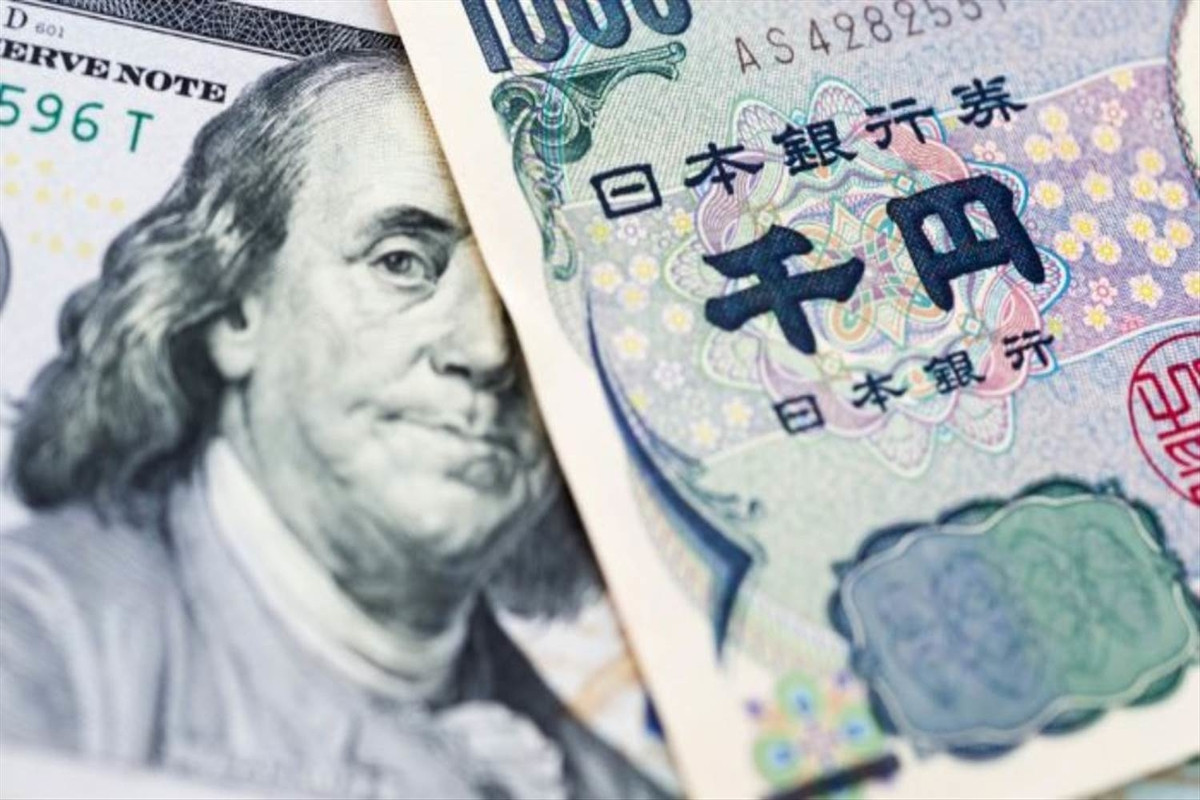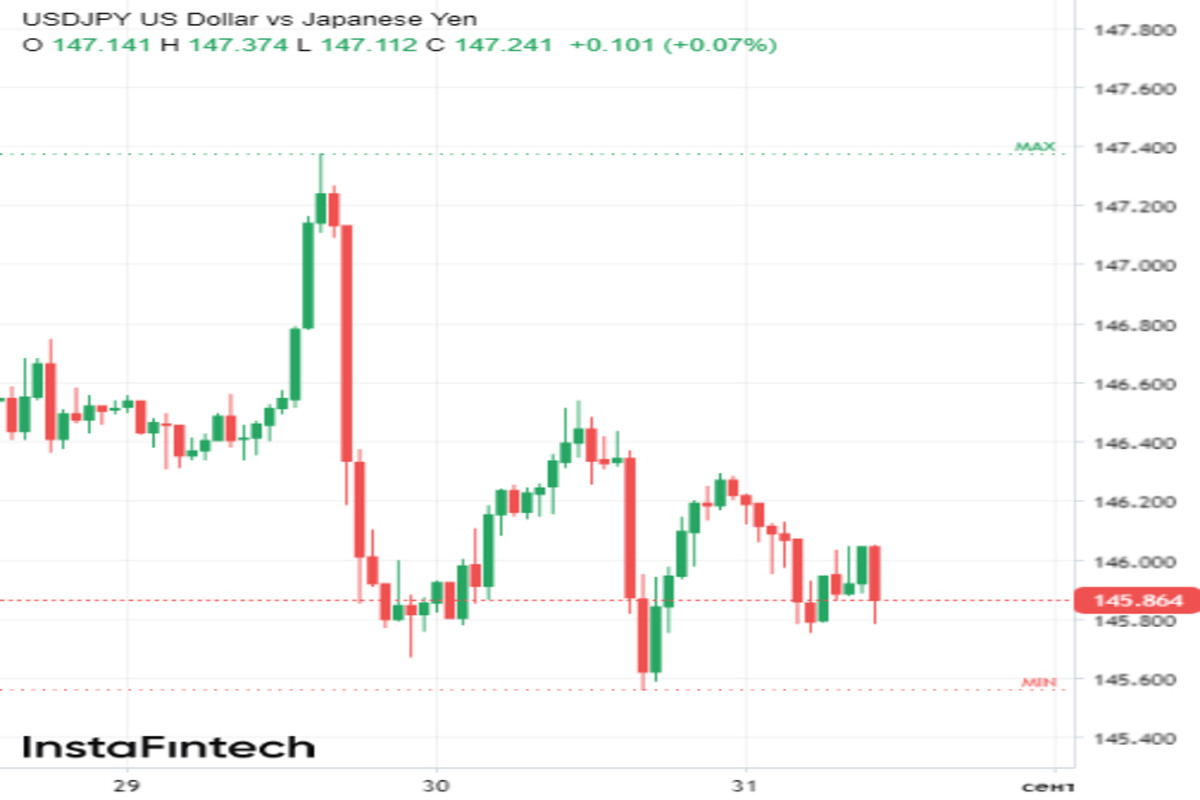
Uncertainty persists in the market regarding the future policies of both the US Federal Reserve and the Bank of Japan. This is affecting the current dynamic of the USD/JPY currency pair. This week, the major currency is fluctuating and struggling to determine its direction. We are examining how long these fluctuations will continue and who will ultimately benefit: the dollar or the yen.
The market is awaiting the nonfarm payrolls (NFP) report, but the final decision rests with the Fed.
The USD/JPY pair is closing the month with a significant gain. In August, the major currency strengthened by 2.6% due to the market's confidence in the ongoing strong monetary divergence between the US and Japan.
Until recently, traders were nearly certain that over the next few months, the Fed would continue its hawkish stance while the Bank of Japan would remain dovish.
However, recent events have made investors doubt these predictions. Currently, the market is rife with speculation about the end of the current tightening cycle in the US and the Bank of Japan's transition to normalizing its monetary policy.
Recent macroeconomic data from the US casts doubt on the hawkish intentions of the American regulator. These data pointed to signs of a labor market slowdown and initial cracks in the economy.
Notably, last Tuesday, the US dollar sharply fell against all major currencies, including the yen, after the release of a weak JOLTS report. The statistics revealed that in July, job vacancies in the US dropped to their lowest level in 2.5 years.
A day later, the greenback reacted negatively to the release of non-farm employment data in the US. According to the ADP release, the number of new jobs only grew by 177,000 in August, compared to the expected 195,000.
Another downward factor for the USD yesterday was the final GDP data for the second quarter in the US. The indicator dropped to 2.1% on an annual basis from the initial forecast of 2.4%.
All this data confirmed investors' expectations that the Fed will pause the rate hike cycle in September. The likelihood of this scenario is now estimated by the futures market at nearly 90%.
In the context of the latest macroeconomic statistics, traders lowered their forecast for the November tightening. The probability of another rate hike in the US this year is only assessed at 46%, although it rose above 60% after the Fed chair spoke last week.
As we can see, most market participants currently believe that interest rates in the US have already peaked, and they no longer anticipate hawkish moves from the Federal Reserve.
In the near future, the dovish sentiment regarding the Fed's monetary policy could strengthen even more if we receive soft data again today or tomorrow.
On Thursday, all traders' attention will be focused on the Personal Consumption Expenditures Price Index (PCE), and on Friday, the Nonfarm Payrolls report will be the key trigger for the dollar.

Analysts are predicting strong volatility for all major dollar pairs amid the publication of the Non-Farm Payrolls (NFP) data. If the data turns out much weaker than the forecast (170,000 jobs), it will strengthen the market's belief that the Federal Reserve has completed its current tightening cycle.
In that case, the dollar might plummet, but its weakness is likely to be short-lived. Most experts believe that after the market prices in the risk of the US rate hikes end, a new question will arise for traders: how long will the Federal Reserve keep interest rates high?
A recent statement by Fed Chairman Jerome Powell, made at the Jackson Hole Economic Symposium, indicates that the Fed intends to keep rates high for a prolonged period. Now, with the US economy visibly slowing under the pressure of tight monetary conditions, the market will eagerly await what the Fed says at its upcoming meeting on September 20.
According to analysts, uncertainty about the Fed's future policy will persist in the market for the next 3 weeks. As a result, in the medium term, the greenback is likely to continue to fluctuate, showing both decreases and increases.
If American policymakers debunk rumors of imminent monetary policy easing in the US at the September meeting and hint at an extended period of high rates, this should support the dollar in the long term.
As for the Bank of Japan and the yen, observations indicate that starting in February, the Japanese currency has been sharply falling against its main competitors in the last days of each month. August is unlikely to be an exception.
On Wednesday, the indicator of JPY strengthening against other G10 currencies, closely monitored by Deutsche Bank, closed at a record low.
Nevertheless, at the end of August, the yen has a fairly good chance of reducing its monthly losses against the dollar if today's release of the PCE index suggests further inflation decreases in the US, reinforcing the market's dovish sentiment towards the Fed's policy.
Next month, the yen's position could also strengthen thanks to active speculation about a possible monetary shift by the Bank of Japan (BOJ).
Notably, last week, the governor of the Japanese Central Bank also participated in the economic forum in Jackson Hole. During his speech, Kadsuo Ueda drew attention to the still low level of consumer inflation in the country, which, in his opinion, justifies the current ultraloose BOJ policy.
However, this week, yen bulls were encouraged by hawkish rhetoric from Japanese officials. On Wednesday, BOJ board member Naoki Tamura stated that the regulator could lift the negative interest rate early next year, as by that time the bank is likely to have achieved its mission of stable 2% inflation.
It is important to note that N. Tamura's comment sharply contrasts with the tone of his colleague, Toheaki Nakamura. On Thursday, the most dovish member of the BOJ board lobbied for maintaining the ultraloose policy as the central bank's inflation target remains elusive.
"The sustainable and stable achievement of the 2% inflation target accompanied by wage growth isn't in sight yet," Nakamura said.
The latest opinions from Japanese officials indicate a growing rift within the BOJ. On the one hand, the market might interpret this as a signal for an imminent reconsideration of the current monetary course of the central bank, leading to active yen purchases before the September BOJ meeting.
On the other hand, the conflicting positions of Japanese policymakers confirm the recent statement by BOJ Governor K. Ueda about the extremely high uncertainty regarding the future inflation trend. This indicates that as long as the regulator does not understand where prices are heading, it will stick to the current policy.
Currently, most experts predict that the Bank of Japan will take its first hawkish steps only in April 2024, by canceling the yield curve control mechanism and starting rate hikes only in the second half of the following year.
Until then, the yen is likely to remain under pressure and decrease after each dovish BOJ meeting.
Summary
As we can see, in the near future, the yen might outperform the dollar. However, in the medium term, the USD/JPY pair is likely to trade sideways due to the ongoing uncertainty about the actions of US and Japanese regulators.
After the September meetings of the Fed and the BOJ, the US dollar has more chances for strengthening than the yen, as these meetings are unlikely to fundamentally change the underlying conditions. The overall picture will continue to favor the greenback rather than the yen.
 English
English 
 Русский
Русский Bahasa Indonesia
Bahasa Indonesia Bahasa Malay
Bahasa Malay ไทย
ไทย Español
Español Deutsch
Deutsch Български
Български Français
Français Tiếng Việt
Tiếng Việt 中文
中文 বাংলা
বাংলা हिन्दी
हिन्दी Čeština
Čeština Українська
Українська Română
Română

